Community of Crossfit
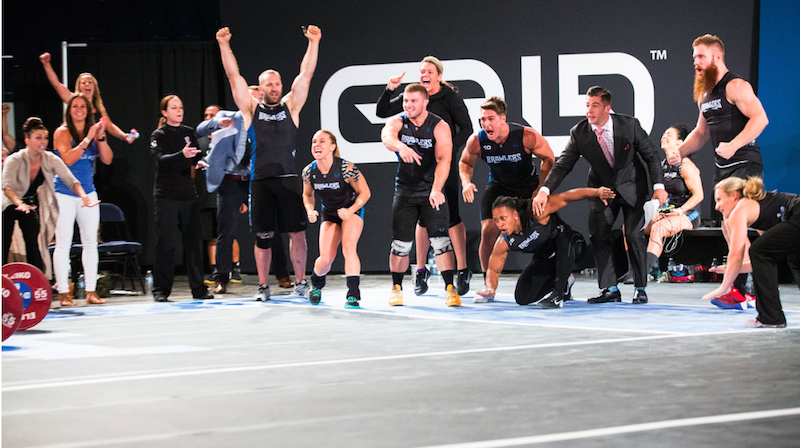
COMMUNITY OF CROSSFIT
The team that plays together stays together
“CrossFit: the only sport where the loudest cheers
are for the last to finish.”
Cheering for whom?! What does this phrase even mean? How, and more importantly, Why would you cheer for someone who’s competing against you? And why cheer for someone who’s about to place last? Where’s the glory in that? Believe it or not, there’s an entire demographic of people who are just as much about each other’s success as they are about their own: the CrossFit community. The term “CrossFit” causes a stir in the fitness industry. No one “likes” CrossFit—you either love it or hate it, especially if you’re a bodybuilder. But there’s something to be said for the sense of kinship and communal workouts that CrossFit provides, which may be lacking in bodybuilding. This “group identity” isn’t just a part of CrossFit—it’s integral to it.
According to a study at Oxford University’s Institute of Cognitive and Evolutionary Anthropology, working out in a group causes a greater release of endorphins than working out solo, even when the same amount of work is performed.1 Not only do endorphins make you happier, but they also have a protective effect against pain—to an extent. This means you’re able to withstand greater physical stresses while training, which, over time, will help increase your performance. In addition to the endorphin release, the researchers determined that the successes and triumphs achieved by working out in a group is probably a functional of the “evolutionary effect of group bonding … synchronization … and shared goals.”2 While the Oxford study makes a good case for group exercise leading to improved mood and performance, other studies uncover different positive effects of group CrossFit classes. For example, another study done in Michigan builds on this theory, but this time in terms of performance enhancement, as it examines the “Köhler Motivation Gain Effect.” The Köhler effect is a phenomenon that occurs when less capable individuals perform better while performing a task with others than when performing a task individually.3

To explain this a little more thoroughly, people exercise harder when they’re working out next to others who are better than them (they found the sweet spot to be about 40 percent better). Whether it’s biking, planking, or swimming, exercise time and performance were dramatically increased when (a) people worked out alongside other people (and not just beside them the way you do in a gym, but actually in a partner/group setting) and (b) the other people in the class were superior. The Kohler effect and the idea of community isn’t vital to CrossFit just because of the WODs we do every day in the gym; a very alluring part of the sport is that competitions can be done individually or in teams. Teams can be groups of two to six co-ed or same-sex individuals. The only motivator in a workout more powerful than trying not to let yourself down is trying not to let five other people down. In a study done on swimmers and track and field relay teams, researchers noticed that the least capable members on the team demonstrated a higher motivation gain and performed significantly better than their performance as individuals.4 So even though they may have been the weakest link as individuals, they picked up their game considerably when exercising as part of a team.
In addition to the physical benefit, we shouldn’t ignore the emotional and psychological components of being part of a community. How cool would it be if you and two of your closest friends competed on a bikini or bodybuilding team together onstage? I don’t mean that you all have the same coach; I mean that all three of you are judged at the same time on your symmetry, proportions, muscle size, leanness, etc. It’s unheard of, right? But how much harder would you push yourself in the gym, and how much less would you think about cheating if you knew that you could be letting down your friends and teammates if you didn’t bring your A-game to the stage? Both the competitive and the recreational aspects of the CrossFit community are perfect for anyone, any age, any level or ability, and any type of athlete.
If this doesn’t at least get some of you thinking about trying CrossFit in a group, then you may just be better off as a garage gym hermit. But if you’re all about those gains and becoming a better athlete, then don’t be so quick to dismiss your CrossFit-crazy friend every time she asks you to come box with her.
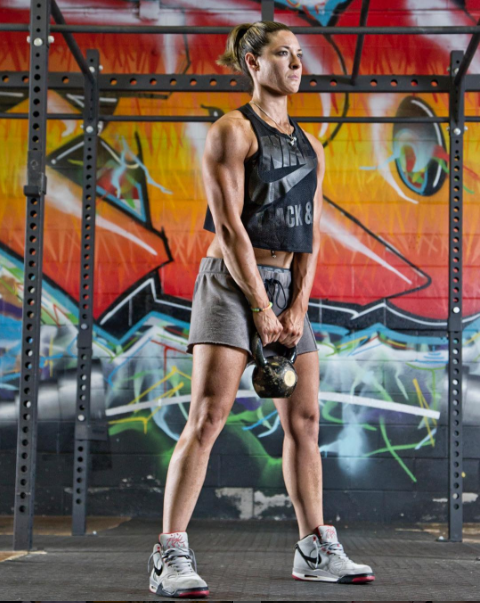
References:
1. Davis A, Taylor J, Cohen E. Social bonds and exercise: evidence for a reciprocal relationship. PLoS One. 2015 Aug 28;10(8):e0136705.
2. Hutchinson A. Is group exercise better than working out solo? The Globe and Mail. http://www.theglobeandmail.com/life/health-and-fitness/fitness/is-group-.... Published January 6, 2010. Accessed February 10, 2016.
3. Hertel G, Kerr NL, Messé LA. Motivation gains in performance groups: Paradigmatic and theoretical developments on the Köhler effect. J Pers Soc Psychol. 2000 Oct;79(4):580-601.
4. Osborn KA, Irwin BC, Skogsberg NK, Feltz DL. The Köhler effect: Motivation gains and losses in real sports groups. Sport Exerc Perform Psychol. 2012 Nov;1(4):242-253.
Justin Cotler is head coach at CrossFit Dynamix in Astoria, New York. He first put a team together for the 2012 North East Regionals CrossFit competition and ended up placing 10th. In 2013 and 2014, his Team Dynamix took home first-place finishes at Regionals, then went on to place fifth and 16th at those years’ CrossFit Games, respectively. For 2016, he’s putting together an incredible, Frankenstein’s monster-type team, pulling athletes from their respective boxes (and in some cases homes) in different cities and states, to his. Coach Cotler also led his NPGL Team, the DC Brawlers, to back-to-back championships, making them an undefeated dynasty in the league. This guy knows a thing or two about community and team building.
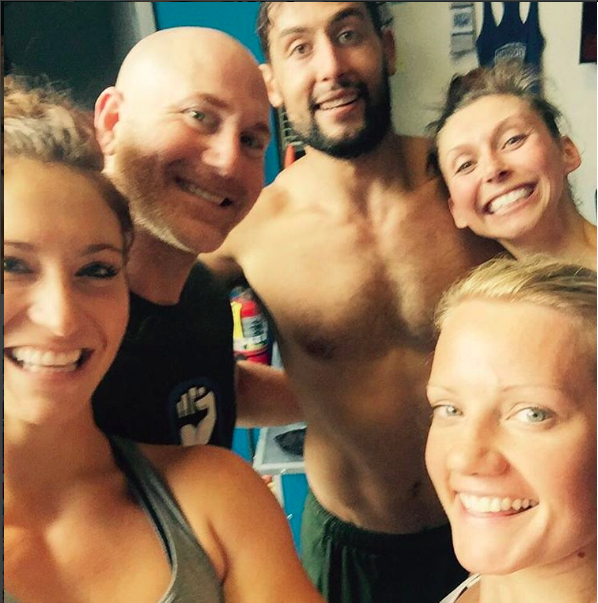
MUSCLE INSIDER: When people are asked what they love about CrossFit, one of the first things that are said is “the community.” What does this mean?
JUSTIN COTLER: I think it’s an incredibly special component of CrossFit. When we moved locations (from 750 square feet to 3,700), our membership group grew dramatically. But I don’t see the people who come into the gym as members; I see them as family. It’s one tight-knit group of like-minded individuals who really want to see not just themselves, but their teammates, get better. This mentality allows people to not just get better inside the gym, but also to enhance their daily lives. The stuff we do inside the box is very difficult, and to have that support and nurturing, compassionate community around you makes achieving all your goals a little easier. At the end of the day, it brings everyone together to achieve their fitness goals and enrich their lives.
MI: Enhancing your life, especially outside the box, is a huge deal. That’s transformative and life-changing, really. But what advantage does the community aspect offer a competitive athlete versus a recreational member?
JC: I think it’s enormous. There will always be unbelievable cases where people are self-driven, and that’s great! But ultimately, the community for us (especially at Regionals in 2013 and 2014) when you’re fighting on the competition floor, going up against some incredible athletes, is about the support. We like to call Dynamix “The Sea of Blue” because you’ll go to Regionals and see all these people (essentially your Dynamix family) decked out in blue. They’re there to support the other athletes, and I think it makes all the difference to them. It’s like the 12th man in football being the crowd. The athletes are so supported by their community that there’s no doubt in my mind that the support allows them to train and compete harder. There is rabid support in CrossFit for the athletes of a home box.
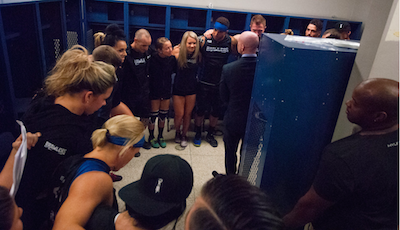
MI: Why is a CrossFit class different than a group exercise class like spin or step? They’re both groups, right?
JC: I think a lot of that has to do with the methodology. It has to do with the time and effort that’s been spent with the individuals in the class. For us, we take people in our foundations class who are coming in at the beginning stages of CrossFit and make every week a building block. So you’re really directing the course of their fitness lives; it’s a very personal thing. Our motto is “Change your fitness, change your life,” and we take that very seriously. I’m not sure that’s the case at a Globo Gym, per se. People are spending a large majority of their time together (in classes, at social events, or watching competitions), and the bond that’s created is so incredibly strong, that I don’t think it can be replicated in any other environment.
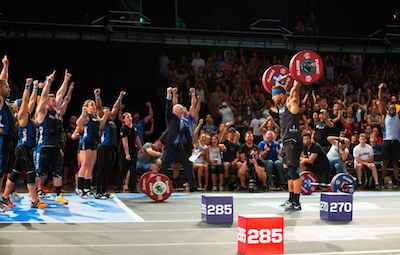
MI: I know you’re familiar with Pumping Iron. Arnold has a famous quote where he tells the audience that although he and Franco Columbu are best friends, he has no qualms on the day of the competition about giving him “the wrong advices.” Why will you never hear this in CrossFit? Why are they so supportive of each other?
JC: I’ve always found it bizarre, but also a special part of the community. I think that for the most part, a lot of the people who don’t do CrossFit don’t understand how much the workout entails, and how much pain we’re putting ourselves through. So I think the athlete understands that, and there’s a sense of respect and brotherhood/sisterhood for that fellow athlete. A lot of the time also, they’re competing just against the clock, not each other. So the fact that they understand how hard the workout is to complete makes a difference. I don’t think you get that in any other sport.
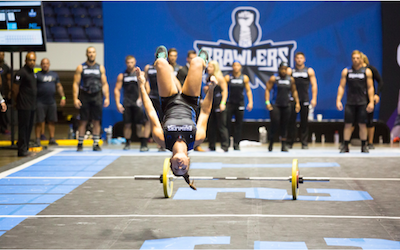
MI: Give me the top four attributes of teams/individuals that you feel are imperative to success.
JC: First, love. By love, I mean the respect of the person next to you, and the trust of knowing that they’ll do whatever it takes for you, and vice versa. You have to have camaraderie and love. You start to see things break down when people don’t trust each other and doubt each other. That’s a team killer.
Second, persistence. You can fail, but if you fail and you allow it to take you out of the game or make you quit or give up, then you’ve lost. You won’t be able to achieve what you want to achieve. If you quit, you can never win; so it doesn’t matter how many times you fail, as long as you keep going. Having that persistence and always getting back up, is huge.
Third, passion. You’ve gotta love what you do. If it becomes a job and you don’t like it, then it’s going to show in your performance.
Fourth, respect. Respect for what it is you’re doing, respect for the program, respect for training, and ultimately respect for your fellow athlete or adversary. What we do is really hard, and it’s important to respect people who do it. I wish that before people would trash it, they would try it, because ultimately they’d have more respect for what these athletes do.
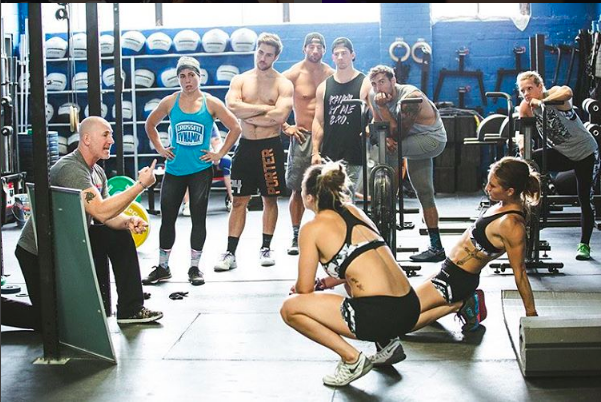
CrossFit vs. Bodybuilding
"I think there’s a level of commitment and discipline you see in the bodybuilding community that’s unparalleled. There’s a huge correlation between what bodybuilding does and what CrossFit does. You have to also be incredibly disciplined and incredibly committed in CrossFit, so I think there’s a lot more similarities than people recognize. I think that the two communities should support each other. There are different methodologies to fitness, and at the end of the day, while I know right now there’s a huge chasm and gap between the two, I don’t think there has to be. I think there are benefits to both. They can be complimentary without being contradictorY."
Check out Team Dynamix and the DC Brawlers online!

